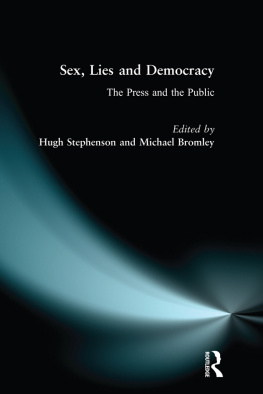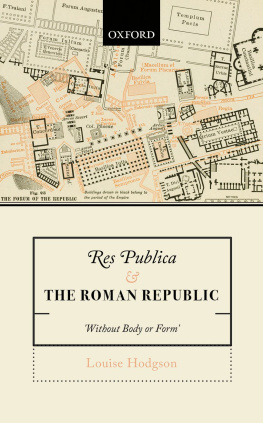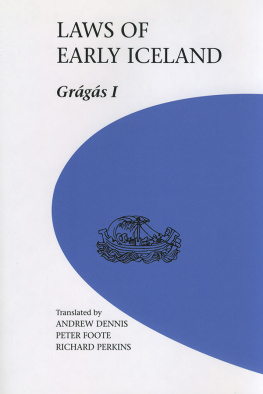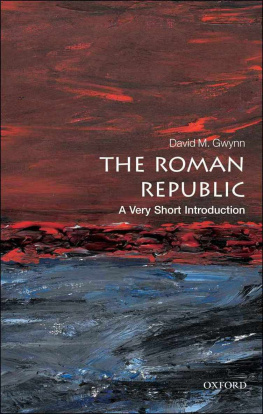JOHNS HOPKINS UNIVERSITY STUDIES
IN
HISTORICAL AND POLITICAL SCIENCE
HERBERT B. ADAMS, Editor
History is past Politics and Politics present HistoryFreeman
NINTH SERIES
VII-VIII
PUBLIC LANDS AND AGRARIAN LAWS
OF THE
ROMAN REPUBLIC
BY ANDREW STEPHENSON, PH.D.
Professor of History, Wesleyan University
BALTIMORE
THE JOHNS HOPKINS PRESS
JULY-AUGUST, 1891
Copyright, 1891, BY THE JOHNS HOPKINS PRESS.
PREFACE.
In the following pages it has been my object to trace the history of the domain lands of Rome from the earliest times to the establishment of the Empire. The plan of the work has been to sketch the origin and growth of the idea of private property in land, the expansion of the ager publicus by the conquest of neighboring territories, and its absorption by means of sale, by gift to the people, and by the establishment of colonies, until wholly merged in private property. This necessarily involves a history of the agrarian laws, as land distributions were made and colonies established only in accordance with laws previously enacted.
My reason for undertaking such a work as the present is found in the fact that agrarian movements have borne more or less upon every point in Roman constitutional history, and a proper knowledge of the former is necessary to a just interpretation of the latter.
This whole question presents numerous obscurities before which it has been necessary more than once to hesitate; it offers, both in its entirety and in detail, difficulties which I have at least earnestly endeavored to lessen. These obscurities and difficulties, arising in part from insufficiency of historical evidence and in part from the conflicting statements of the old historians, have been recognized by all writers and call forth on my part no claim for indulgence.
This monograph is intended as a chapter merely of a history of the public lands and agrarian laws of Rome, written for the purpose of a future comparison with the more recent agrarian movements in England and America.
ANDREW STEPHENSON.
MlDDLETOWN, CONN.
May 8, 1891.
TABLE OF CONTENTS.
Sec.
Sec.
Sec.
Sec.
Sec.
Sec.
Sec.
Sec.
Sec.
Sec.
Sec.
Sec.
Sec.
Sec.
Sec.
Sec.
Sec.
Sec.
BETWEEN CSAR AND POMPEY
Sec.
TO THE TIME OF AUGUSTUS
Images of the original, accented, Greek quotations
PUBLIC LANDS AND AGRARIAN LAWS
OF THE ROMAN REPUBLIC.
CHAPTER I.
SEC. 1.LANDED PROPERTY.
The Romans were a people that originally gave their almost exclusive attention to agriculture and stock-raising. The surnames of the most illustrious families, as Piso (miller), Porcius (swine-raiser), Lactucinius (lettuce-raiser), Stolo (a shoot), etc., prove this. To say that a man was a good farmer was, at one time, to bestow upon him the highest praise. [1] This character, joined to the spirit of order and private avarice which in a marked degree distinguished the Romans, has contributed to the development among them of a civil law which is perhaps the most remarkable monument which antiquity has left us. This civil code has become the basis of the law of European peoples, and recommends the civilization of Rome to the veneration of mankind.
The corner-stone of this legislation was the constitution of the law of property. [2] This property applies itself to everything in the law of Rome, to land, to persons and to obligations.
Urbs, the name of the village, takes its origin, according to an etymology given by Varro, [3] from the furrow which the plow traced about the habitations of the earliest dwellers. But what is of more interest to us is that the legal signification of Urbs and Roma was different. The former was the village comprised within the sacred enclosure; the latter was the total agglomeration of habitations which composed the village, properly [4] so called, and the outskirts, or suburbs. The powers of certain magistrates ceased with the sacred limits of the Urbs, while the privileges accorded to a citizen of Rome extended to the village and the suburbs and finally embraced the entire Roman world.
The most ancient documents which have reached us from the history of India and Egypt reveal that they had landed property fully established, while Roman annals reveal to us the very creation of this institution. Whatever modern criticism may deduce, Dionysius, Plutarch, Livy, and Cicero agree in representing the first king of Rome as merely establishing public property in Roman soil. This national property, the people possessed in common and not individually. Such appears to us to be the quiritarian property par excellence [5] and its primitive form was a variety of public community [6] of which individual property was but a later solemn emancipation. To this historic theory attaches the true notion of quiritarian land of which we will speak in greater detail hereafter.
As regards the organization and constitution of individual and private property, the traditions themselves attribute this to the second king of Rome, the real founder of Roman society, who divided the territory among the citizens, marking off the limits of individual shares and placing them under the protection of religion. In this way a religious charter was granted to the institutions of private property. Thus a primitive division of territory appears to have been the basis of these varied traditions, but the precise form of this division eludes us.
The Roman territory was confined for many ages to a surface of very limited extent, which properly bore the name of Ager Romanus. This name with signification slightly changed appeared to be still in use in the time of the empire, and even at the present day a portion of the Roman territory which very nearly corresponds to the ancient territory of the imperial period is called Agro Romano. [7] That which was properly called Ager Romanus at first only occupied the surface of a slightly expanded arc whose chord was the river Tiber. [8] Primitive Rome did not extend beyond the Tiber into Etruria, and toward Latium her possessions did not extend beyond the limits of some five or six miles reckoning from the Palatine. Toward the east the towns of Antemnae, Fidenae, Caenina, Collatia and Gabia lay in the immediate neighborhood, thus limiting the extension of the city in that direction within a radius of five or six miles; [9] and northward the Anio [10] formed the limit. To the southwest as you approach Lavinium, the sixth milestone marked the boundary of Rome. Thus with the possible exception of a small strip of land extending upon either bank of the Tiber to its mouth, and embracing the old site [11] of Ostia, have we marked out all of ancient Rome. Strabo [12] says it could be gone round in a single day. And according to this same author it was within these limits that the annual auspices [13] could be taken.
Both city and land increased with time. Property seemed to have been added and lost successively during the reign of the kings. [14] The last increase of the Ager Romanus was due to the labors of Servius Tullius, and it was in the reign of this king that it reached its greatest limit. Dionysius [15] says: "As soon as he (Servius) was invested with the government, he divided the public lands among such of the Romans as having no lands of their own, cultivated those of others.... He added two hills to the city, that called the Viminal and the Esquiline hill, each of which forms a considerable city; these he divided among such Romans as had no houses, to the intent that they might build them.... This king was the last who enlarged the circumference of the city by the addition of these two hills to the other five, having first consulted the auspices as the law decided, and performed the other religious rites. Further than this the city has not since then been extended." Without doubt these possessions received great additions in later times, [16] but they were not incorporated in the









